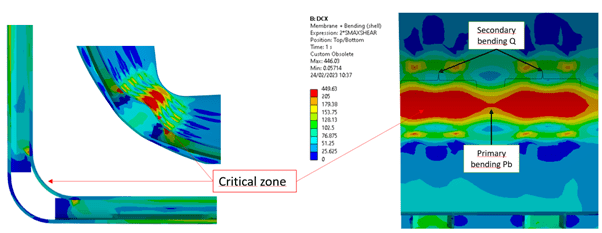Jorge Pena
Mechanical
I would like to receive some advice about bending stress classification in the corners of a rectangular or parallelepiped double wall vessel with ligaments. Code: ASME VIII-2 5.5.2 or EN 13445-3 Annex C

From my analysis, this zone can be compared with a flat head - junction to shell from VIII-2 Table 5.6. It is classified as primary (Pb) if the bending moment is necessary for maintaining the bending stress in the center region within acceptable limits, otherwise it is secondary (Q).
I know that there is a superposition of primary+secondary in this zone since ligaments locally constraint displacements. Finally, the stresses has been classified as Pb between ligaments and Q near the ligaments in order to be conservative. However, may it be possible to classify all bending as secondary (Q)?
It would be valuable discuss this case with someone else.
Thank you in advance.

From my analysis, this zone can be compared with a flat head - junction to shell from VIII-2 Table 5.6. It is classified as primary (Pb) if the bending moment is necessary for maintaining the bending stress in the center region within acceptable limits, otherwise it is secondary (Q).
I know that there is a superposition of primary+secondary in this zone since ligaments locally constraint displacements. Finally, the stresses has been classified as Pb between ligaments and Q near the ligaments in order to be conservative. However, may it be possible to classify all bending as secondary (Q)?
It would be valuable discuss this case with someone else.
Thank you in advance.
